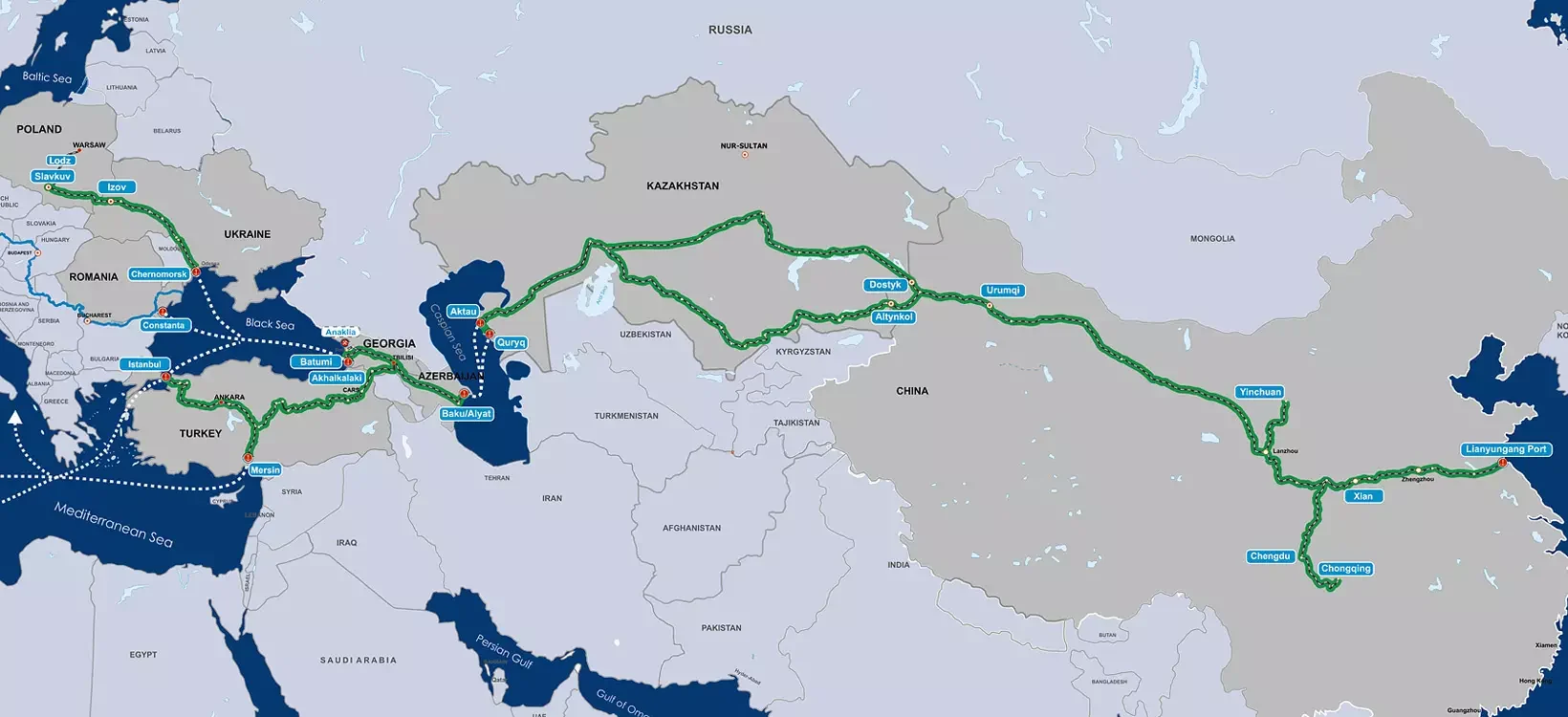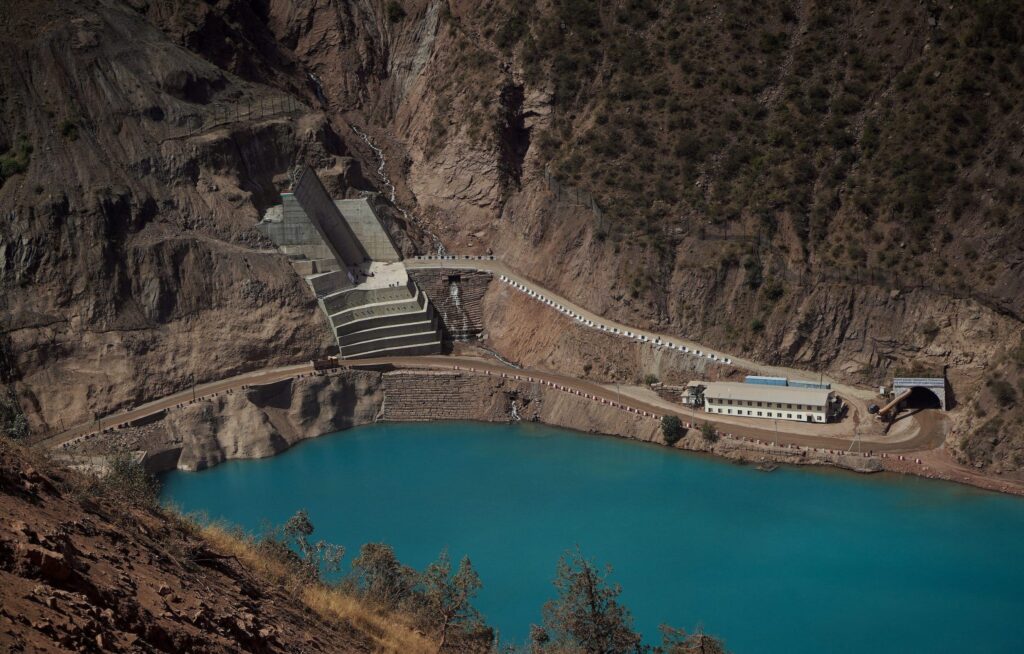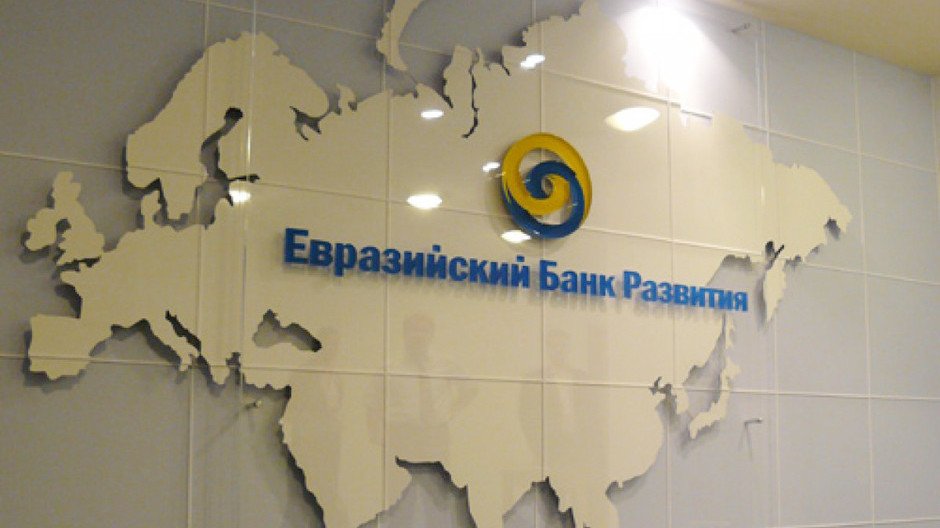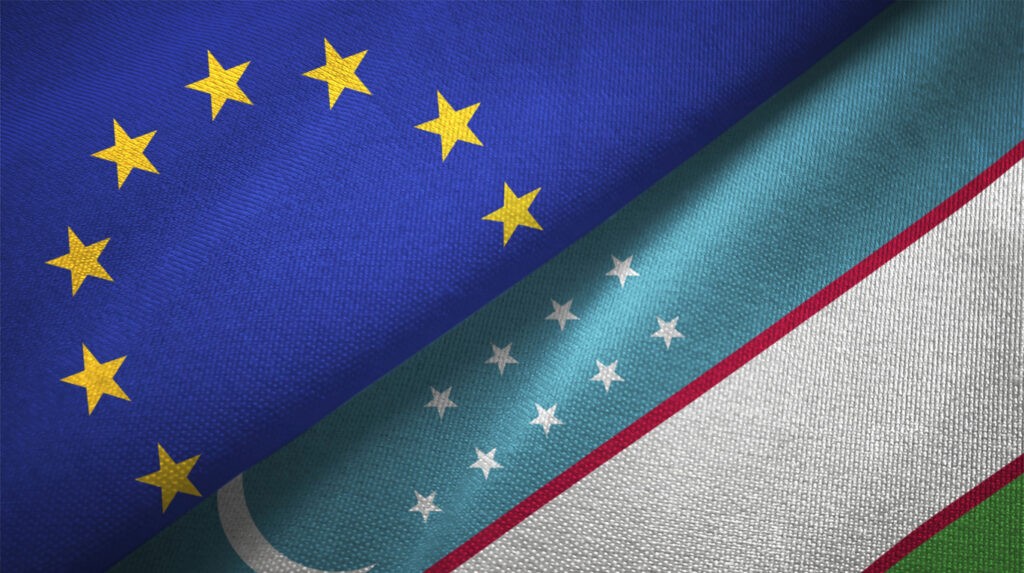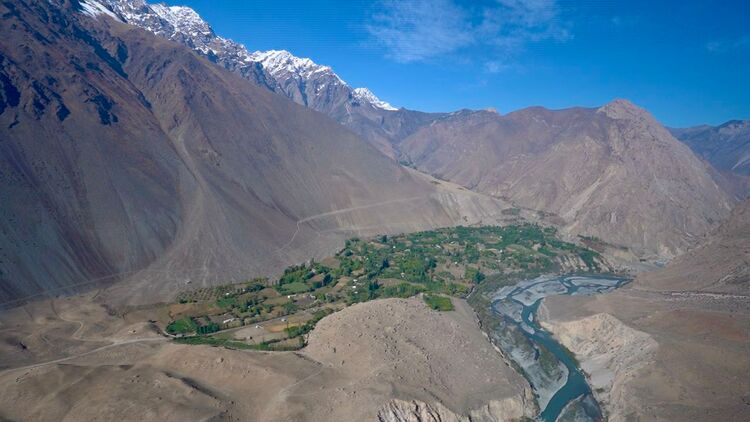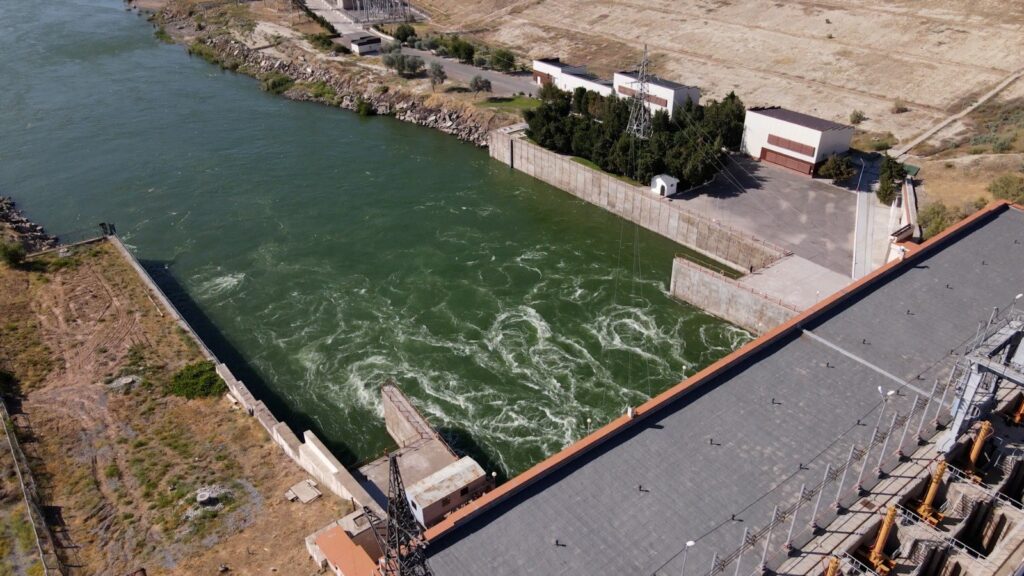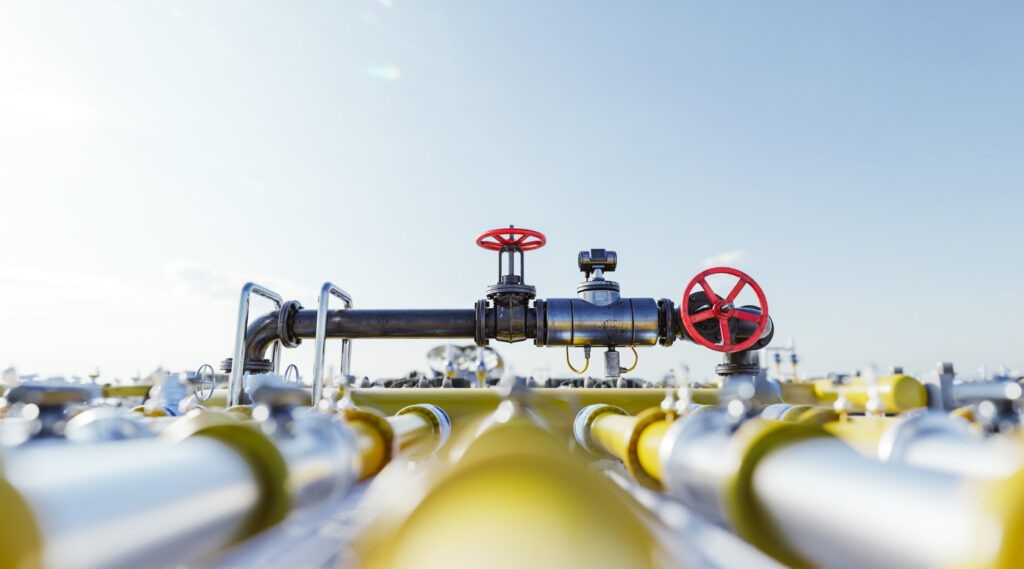In the aftermath of the pandemic and amid rising geopolitical tensions and sanctions – leading to the breakdown of traditional shipping and logistics chains – the need to develop new, alternative routes for trade has gained particular importance. One such route is the Middle Corridor, or Trans-Caspian International Transport Route, which has become a priority project for Kazakhstan and its neighbors. In this overview we look at the prospects for this multi-modal transnational route.
The Trans-Caspian International Transport Route (TITR), or Middle Corridor, starts in China, passes through Kazakhstan, the Caspian Sea, Azerbaijan, Georgia and Turkey, before reaching Europe. Last year, more than 2.7 million tons of cargo was transported along the TITR, up 86% on 2022, whilst it is expected to carry 4 million tons this year.
Drivers of growth
This growth in volumes has been facilitated by the conflict in Ukraine and restrictions on the transport of goods through Russia, which previously represented the main land route connecting East and West. As a result, in 2022 the volume of container traffic via the TITR grew 33% year-on-year. In addition, amid the geopolitical tensions that have effected the safety of traversing the Suez Canal and the Red Sea – the central and shortest trade route between Asia and Europe – many shipping companies have been forced to go around the southern tip of Africa. This has led to an increase of 14-18 days in the delivery time of goods, as well as additional costs. Because of attacks by Houthi rebels, the number of container ships passing through the Suez Canal each week was down 67% year-on-year in 2023, according to the UN. Meanwhile, in the first two months of 2024, trade volumes along the route decreased 43%.
According to data from the UN Conference on Trade and Development, last year the cost of transporting goods from Shanghai to European countries by sea roughly tripled. At the same time, shipping goods by rail from inland Chongqing to Europe was a third cheaper than by sea. Experts note that over the past decade, the total cost of transporting goods between China and Europe by rail has fallen 30%. All this opens wide opportunities for the further development of the TITR, which should be taken advantage of by countries along the route.
Middle Corridor countries working together
Today, to ensure safe and uninterrupted exports, as well as to attract more flows through Kazakhstan and other TITR countries, measures are being taken. Indeed, the route is considered a strategic initiative for the development of the entire region’s transport potential. During a recent visit to Azerbaijan, Kazakh President Kassym-Jomart Tokayev said that in the future the volume of cargo transported via the TITR should increase to 10 million tons, which is to be facilitated now by both existing demand and technology.
At the end of 2022, a roadmap for 2022-27 was signed to eliminate bottlenecks along the route in Kazakhstan, Azerbaijan and Turkey, while to boost the volume of cargo transported by rail a joint venture called Middle Corridor Multimodal Ltd was created by railway administrations in Kazakhstan, Azerbaijan and Georgia, thus allowing for a Single Window.
Such cooperation among participating countries and partners plays a key role in the further development and promotion of the route. All Middle Corridor countries are interested in clearing the existing infrastructure bottlenecks, developing the corridor as a whole, and expanding its geographic reach. At the “New Silk Way” VI International Transport and Logistics Business Forum, held in Astana in the autumn of 2023, Turkey’s Transport and Infrastructure Minister, Abdulkadir Uraloglu, expressed Ankara’s firm intention to develop and improve the Middle Corridor. To increase the cargo potential, Turkey is implementing large projects, including joint ones, both in the Middle East and on the African continent. In particular, Uraloglu mentioned the Turkey-Iraq Development Road project, a transport corridor to the Persian Gulf, which should boost cargo flows along the Middle Corridor from West to East.
In general, over the next five years, the Middle Corridor countries plan to invest about 6 billion euros in infrastructure projects. There are also plans to invest in soft infrastructure – operating models, digitization and related operations involved in shipping.
Interest in the route
Whereas for China, as one of the largest participants in the TITR project and the key cargo-generating country, the Middle Corridor promises diversification of transport routes to European markets – especially important in the context of the unpredictable situation in the Middle East and the South China Sea – Europe’s interest is based primarily on the speed of delivery.
For a long time, European countries looked at the route with a good deal of distrust. However, regional and global events in recent years have forced them to reconsider their position. The European Bank for Reconstruction and Development estimates the volume of cargo transported via the TITR in 2030-35 at 1.0-1.5 thousand TEUs per year. Other estimates put it at 500,000-800,000 TEUs per year by 2040.
A World Bank report published at the end of November 2023 did its part to bring attention to the route, presenting priority measures to facilitate the transformation of the TITR into an important and reliable option. The report emphasized that with the right investments and industrial policies, the corridor could halve cargo transport times and triple freight volumes by 2030 (to 11 million tons). World Bank experts see overall trade turnover between China and Europe growing about 30% by 2030. They believe that “if the Middle Corridor is operationalized, in 2030 trade via the Caspian Sea will account for over 60% of trade between the Middle Corridor countries, up from 40% in 2021.”
Improving the operation of the TITR should drive the diversification of cargo flows, with preference for goods with high added value, especially those sensitive to transport time – could incentivize switching from the northern route passing through Russia to the Middle Corridor.
Reorienting supply chains in Kazakhstan, Azerbaijan and Georgia should increase the robustness of their trade flows and reduce their dependence on Russia and China as traditional regional trading partners. This is supposed to be accomplished by diversifying imports and increasing the share of exports to Europe, as well as entering new potential markets in the Middle East, North Africa, the Indian subcontinent, and Southeast Asia. In 2021-30, the cargo flows of the three countries are estimated to grow 90 million tons, of which 70 million tons is attributable to additional exports from Kazakhstan.
Among the main barriers to the development of the TITR today, World Bank experts name the time of transport and cost of transporting goods along the route. Other factors include a lack of coordination and management of the corridor, low efficiency of ports in the Caspian and Black seas, as well as maritime transport in the Caspian Sea, a lack of end-to-end rail infrastructure, and a lack of uniformity and integration of the digital solutions used by the Middle Corridor countries.
The authors of the World Bank report recommend offering logistics solutions that would cover the entire length of the corridor, optimizing procedures and necessary documents, developing digital processes and further enhancing infrastructure and equipment along the entire route.
The problem of falling water levels in the Caspian Sea, actively discussed in Kazakhstan and elsewhere, is also mentioned in the report. Indeed, it could affect the transport of goods along one of the key segments of the route. In this regard, dredging at the Kuryk and Aktau ports is set to get underway this year. Also planned are several infrastructure projects that will increase the capacity of the Kazakh ports – in particular, constructing an additional berth for general and bulk cargo, restoring oil loading infrastructure, and updating and retrofitting handling equipment at the Aktau port, while a grain terminal, berth No. 3, and five new berths are to be built at the port in Kuryk.
According to the chairman of NC Aktau Sea Commercial Port, Abay Turikpenbaev, the port’s throughput capacity is currently 70,000 TEUs per year, which should rise to 100,000 TEUs given the projects being implemented. Overall, the ports should see their throughput capacity boosted to 27.3 million tons (Aktau to 12.3 million tons and Kuryk to 15.0 million tons), enabling more cargo to be transported via the TITR.
Importantly, Kazakhstan is bringing in global expertise, partnering with companies like DP World, Lianyungang Port, and PSA International, among others. This will not only increase trade flows, but also develop digital technology and increase the efficiency of cargo transport and communication between the various actors in the shipping process.
The involvement of such global transport giants, along with studies of the TITR by international financial institutions, confirms the viability and outlook of the Middle Corridor, as well as its critical importance for the economies of the countries along the entire route.
Dauren Moldakhmetov is the Editor-in-Chief of industry transportation publications of Kazakhstan, railway magazine “Trans-Express Kazakhstan”, and the business magazine, “Trans Logistics Kazakhstan”.
